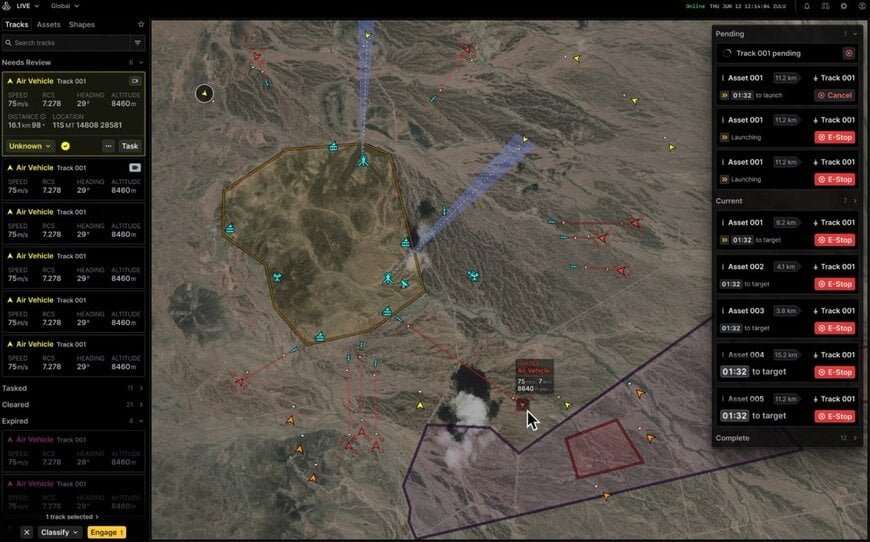www.magazine-industry-usa.com
11
'25
Written on Modified on
Anduril Lattice is the U.S. Army's new battle command system
Anduril's Lattice software platform was selected for the U.S. Army's Integrated Battle Command System Maneuver program to provide next-generation fire control for Counter-UAS missions.
www.anduril.com

Modern battlefields are defined by speed and saturation. Small unmanned aircraft systems can swarm by the hundreds, overwhelming defenses and striking before human decision loops close. Without effective counter-UAS systems, air defense operators face more targets than they can track or defeat, leaving U.S. forces vulnerable. Current command and control systems weren’t built for this fight — they can’t process data or execute kill-chain decisions at the speed required to stop autonomous, distributed attacks.
To meet this challenge, the Army has selected Anduril Industries for the Integrated Battle Command System Maneuver (IBCS-M) program, establishing Lattice as the Army’s next-generation fire control platform for Counter-UAS missions. IBCS-M provides the command, control, and integration backbone for a vast array of counter-drone systems, enabling a single operator to manage multiple threats simultaneously. It fuses sensor data, automates fire control, and integrates new capabilities, reducing operator load and compressing the time from detection to defeat.
At a recent demonstration at Yuma Proving Grounds, Anduril showcased the power of Lattice — the foundation of IBCS-M. In a seven-day trial, Lattice integrated a previously undisclosed sensor and effector within hours, executed live-fire intercepts that achieved four out of four kills, and demonstrated advanced features like autonomy-enhanced fire control, distributed tracking, and kill-chain optimization.
"We can’t think of counter-UAS as static or in the same vein as counter ballistic missile defense. It has to be maneuverable which means it has to be software-centric and adaptable above all else," said Alex Miller, CTO of US Army. "We can’t wait a year for a new sensor or effector to be integrated and we can’t tell our deployed soldiers that we have to wait for an FSR to solve the problem. It has to support a platoon leader on the move with many small sensors across many vehicles as much as it has to support a forward operating base or garrison commander using a mix of existing and emerging systems."
The IBCS-M effort is part of a broader modernization initiative that is reimagining how the Army commands the fight. Legacy systems were built for an era of predictability — today’s world demands an infrastructure that is open, extensible, and capable of evolving at machine speed.
www.anduril.com

